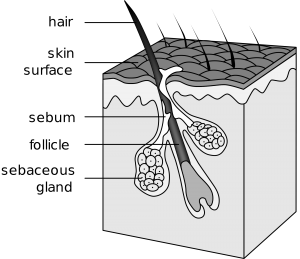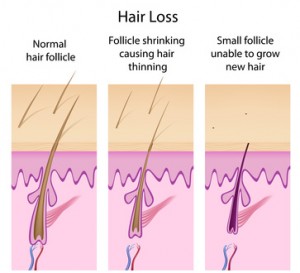Understanding Hair Growth and Hormonal Influences
Hair is a derivative of the epidermis, the top layer of the skin, and the hair follicle is part of the pilosebaceous system. All of these elements are present at least three months prior to birth. It is extremely rare that new hair follicles will develop in an adult. There is a common misconception that males have more hair follicles than women. This is untrue, there is no difference between the female and male distribution of hair follicles.

The difference between males and females regarding sexual hair patterns is due mainly to the concentration of circulating androgens. Androgens explained, are a group of hormones that play a role in male traits and reproductive activity. As a result, a female’s tendency to abnormal hairiness remains inactive because the follicles are dormant.
However, these hair follicles may become active at any time due to various intrinsic and extrinsic factors. For example, inherent factors include inborn androgen sensitivity, a sudden decrease in the testosterone’s protein-binding capacity, or certain females may have a genetic disposition to convert androgen to testosterone. Extrinsic factors that may stimulate hair growth include psychogenic stresses in life, medications, and topical substances applied to the skin.
Intrinsic and extrinsic age plays a significant role in hair growth. Women between the ages of 35 and 58 are in the age range for perimenopause and menopause. Perimenopause is the reverse of puberty, and it is a slow process of the woman’s reproduction system shutting down. Women in this stage may notice a new acceleration of vellus hair, fine hair, from the reduced estrogen in their system. During this time, the current androgens may have more influence on the body since estrogen has decreased. Menopause is when the ovaries have stopped releasing eggs. Women in this stage of life begin to wrinkle and may experience some very coarse hair growth.

It is necessary to note that puberty, pregnancy, and menopause are the three most common times in a woman’s life for the development of unwanted hair. Men, however, develop genetic hair through their middle age. Most unwanted hair develops very slowly over several years. Hair that grows suddenly at any age can indicate a medical problem, such as an endocrine disorder or a side effect of medication.
Whether hair growth is normal or abnormal requires considering several factors: genetics, psychogenetics, hormone production, and a person’s inherent sensitivity to androgen production. When it comes to hair growth, there is usually much more than meets the eye. A superior electrologist will understand several factors and be able to make recommendations to help aid in the client’s hair removal goals and expectations.
At Limoges Electrolysis in New York City, Emily is well-versed in the elements contributing to unwanted hair growth. She makes educated recommendations to help her clients achieve their hair removal goals. Book your free consultation today.

